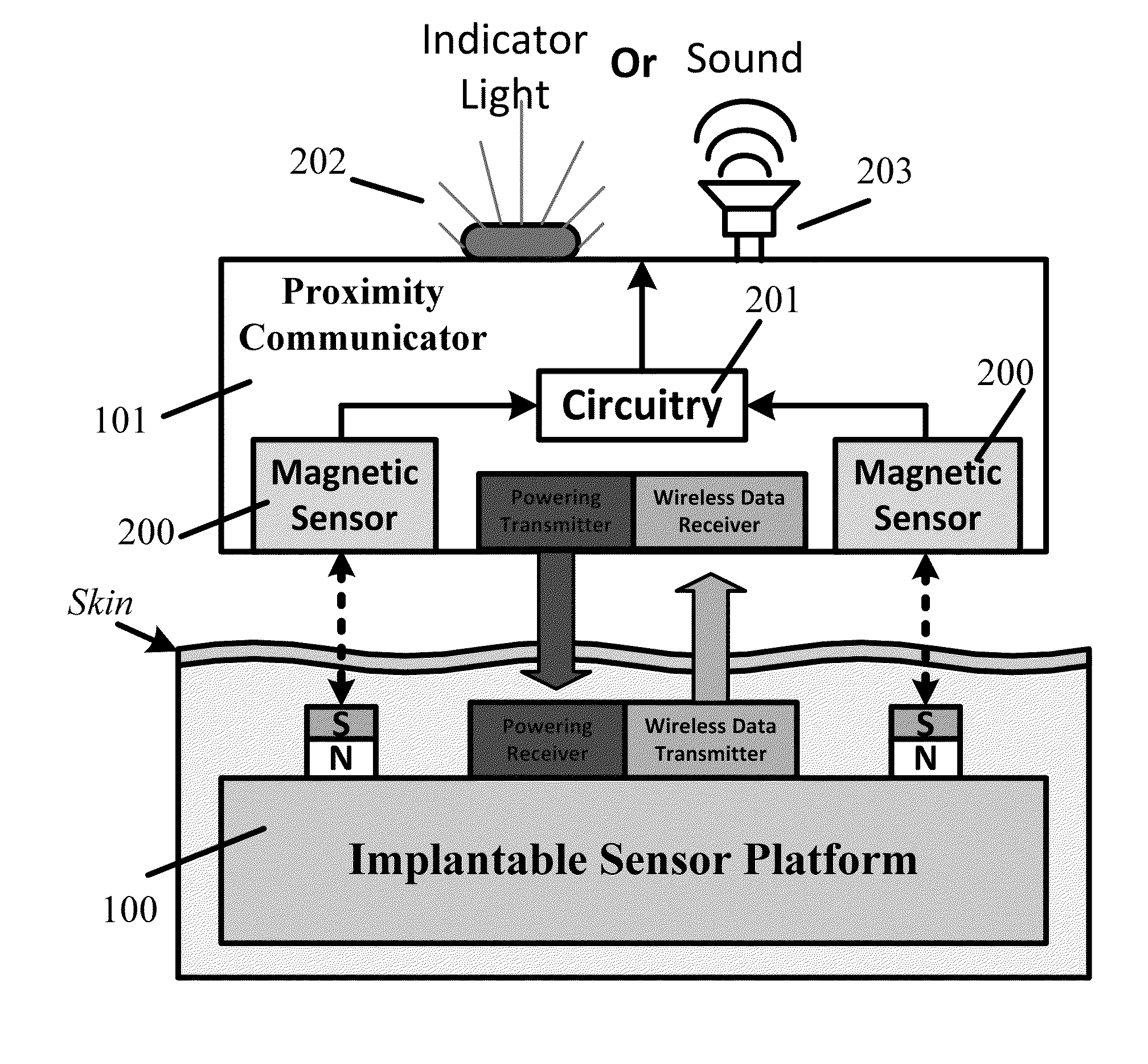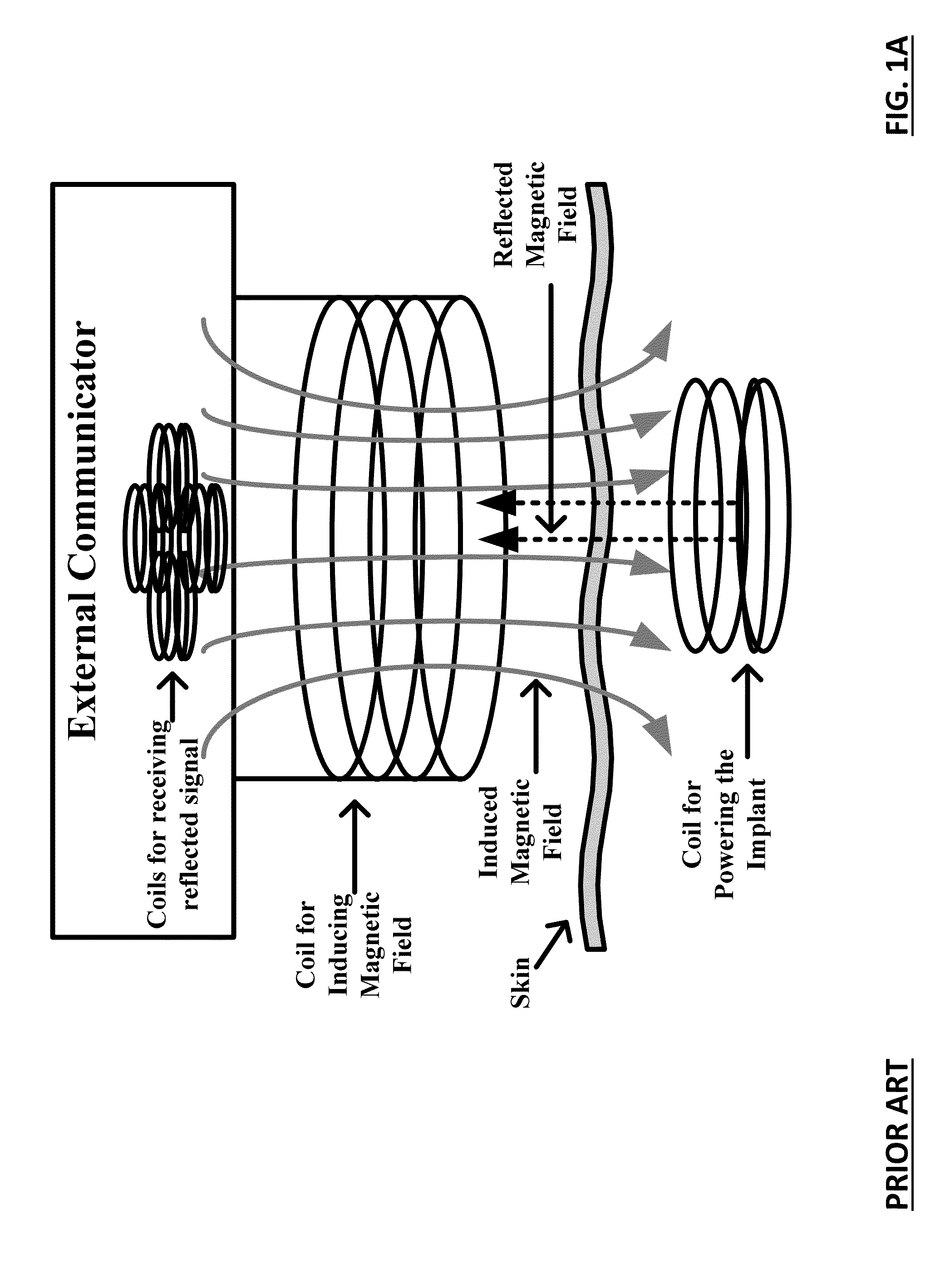Detection of the spatial location of an implantable biosensing platform and method thereof
a biosensor and spatial location technology, applied in the field of biosensors, can solve the problems of larger implantable device footprint, aforementioned alignment problem gets further complicated, and the position placement of the external proximity communicator (used for powering and data communication above the skin) becomes difficul
- Summary
- Abstract
- Description
- Claims
- Application Information
AI Technical Summary
Benefits of technology
Problems solved by technology
Method used
Image
Examples
Embodiment Construction
[0028]The present invention provides a methodology to pinpoint the location of a miniaturized implantable biomedical device by integrating the implant with miniature magnets or materials with magnetic properties (such as nano-sized iron particles or other polarized nanomaterials). Once integrated into the implanted platform, the magnetic field generated through the patient's skin can then detected by the proximity communicator unit located externally in a variety of techniques. These techniques can be partitioned into two distinct methodologies, namely: (i) “self-alignment” methodology, which automatically aligns the powering and data communication components on the implantable platform together with the powering and data receiving components on the external communicator unit when both are in close proximity to each other, and (ii) “User-controlled” alignment, wherein the alignment / misalignment of the implantable unit relative to the proximity communicator is relayed to the user via...
PUM
 Login to View More
Login to View More Abstract
Description
Claims
Application Information
 Login to View More
Login to View More - R&D
- Intellectual Property
- Life Sciences
- Materials
- Tech Scout
- Unparalleled Data Quality
- Higher Quality Content
- 60% Fewer Hallucinations
Browse by: Latest US Patents, China's latest patents, Technical Efficacy Thesaurus, Application Domain, Technology Topic, Popular Technical Reports.
© 2025 PatSnap. All rights reserved.Legal|Privacy policy|Modern Slavery Act Transparency Statement|Sitemap|About US| Contact US: help@patsnap.com



